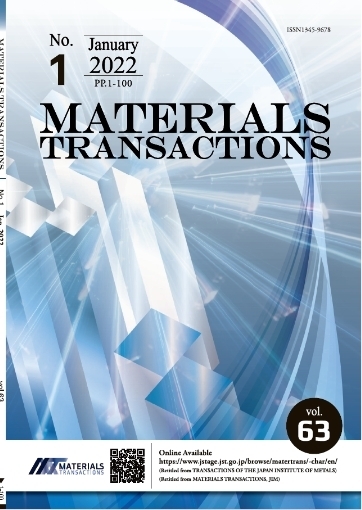Low-Temperature Superplasticity in Aluminum Alloys Processed by Equal-Channel Angular Pressing
Satoshi Ota, Hiroki Akamatsu, Koji Neishi, Minoru Furukawa, Zenji Horita, Terence G. Langdon
pp. 2364-2369
抄録
Equal-channel angular pressing (ECAP) was applied to achieve grain refinement of Al–3 mass%Mg alloys containing 0.2 mass%Sc, 0.2 mass%Fe or 0.1 mass%Zr. The thermal stability of the fine-grained structures was examined by conducting static annealing experiments. The fine grain sizes produced by ECAP were essentially retained up to a temperature of 523 K for the Fe-containing and Zr-containing alloys and up to a temperature as high as 773 K for the Sc-containing alloy. The three alloys with Sc, Fe and Zr additions were pulled to failure in tension at 523 K corresponding to 0.59Tm, where Tm is the absolute melting point of the alloy, and maximum elongations of ∼ 640%, ∼ 370% and ∼ 390% were obtained at an initial strain rate of 3.3×10−4 s−1, respectively. Such elongations resulted in more than three times or approximately twice the elongation achieved in a binary Al–3%Mg alloy. It is shown that either Fe or Zr may be used as an alternative element in place of Sc to attain low temperature superplasticity. Tensile testing was also conducted on the Sc-containing ternary alloy at a temperature as low as 473 K corresponding to 0.54Tm. A maximum elongation of ∼ 420% was attained at an initial strain rate of 3.3×10−4 s−1. This appears to be the lowest homologous temperature reported to date for superplasticty of Al-based alloys.










